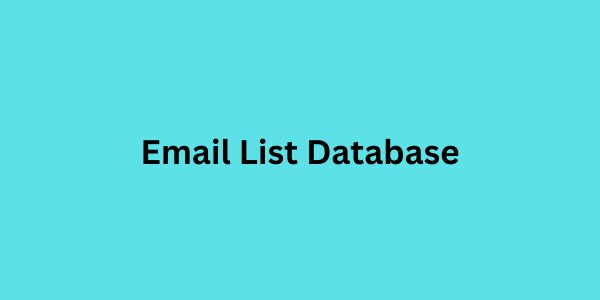Whether trigger emails are use to automate responses against a certain action or an event; the answer is yes, it does. A trigger email, also call a behavioral email or an event-driven email, is an automatically sent message either to a user or customer base on predefine criteria such as actions taken, events participat in, or certain behaviors exhibite. This can be a powerful form of email marketing, whereby businesses offer timely, relevant communication to enrich customer engagement, foster leads, and enhance conversion rates.
How Triggered Emails Work
Triggered emails are those that are initiate China Email Database through some sort of action or event; hence, they are highly relevant in nature and come quite timely. These triggers are set up in some email marketing or automation platform, and once a user meets the conditions of the trigger, an e-mail is automatically sent to them. Unlike regular email campaigns, which are schedul and later sent to a list of contacts at a specific time, trigger emails are individually sent to users in direct response to their actions or behaviors. This makes them much more personaliz and contextually relevant, hence garnering better open and engagement rates.
Common triggers of such emails include:
Signups or registrations: Every time a user has signed up for a particular service, a welcome email is automatically forwarde to them, introducing the brand and detailing what next.
Abandoned cart: When a customer places items in their shopping cart and doesn’t complete the purchase, that can trigger a reminder or incentive email to finalize an order.
Purchase confirmation: Once a customer makes a purchase, confirmation emails are sent out automatically, showing details of the order.
Milestones or anniversaries: Events like birthday dates or membership date anniversaries for users can be triggers for creating personalized experiences through emails.
The Benefits of Triggered Emails
Scale Personalization: Triggered emails allow businesses to pull off the impossible: personalized messages, to a single user at the right time, which is not manually possible. Take, for example, a user abandoning his cart and getting an email speaking about all the items left in the cart. This level of personalization can greatly improve the chances of a user engaging and converting.
Higher Engagement Rates: Since the emails are trigger and relevant to real-time events, these emails often receive much higher open and click-through rates compare to other traditional marketing emails. Users will more often interact with the content that directly relates to their recent behavior or actions.
Automation and efficiency:
Triggere emails demand quite little maintenance after their setting up. They can be run in the background doing routine reengagement of the customers and leads without interference, freeing up more time and resources and keeping regular communications with the users.
Smoothen Customer Experience: Triggere emails create one fluent and interactive customer experience by responding to real-time user actions. Suppose a welcome email right after the user has signe up, which helps them get start, while a thank-you email right after the purchase builds trust and satisfaction.
Lead Nurturing and Retention:
Emails with triggers are very effective Belgium Consumer Email Data in lead nurturing and encouraging repeat business. A series of emails can take a prospect through the sales funnel. While post-purchase emails can inspire future purchases, request feedback, or offer support.
Types of Triggered Emails
Welcome emails: It is after the subscription of any service or newsletters. Welcome emails are what set the stakes for further communication. It may contain a warm greeting. Some useful resources, or an introduction to the brand.
Re-engagement e-mails:
These are meant to help regain the activity of customers or users. Who haven’t engage in activities concerning the brand for quite some time. These may contain some form of discount or special promotion that may tempt the user into re-engagement. Transactional e-mails: These are messages triggere by specific events that have occurre, including but not limite to an order made. A password reset, or shipping of a product. The information within these transactional e-mails is often very important and hence appreciate by customers. Conclusion
Triggere emails are an indispensable part of any successful marketing because. Through them, the enterprise could automatically respond to the many level actions and behaviors of customers. By offering personalize. Timely, and relevant content, businesses can build strong relationships with customers to drive higher conversion rates through increase engagement. Automation triggere emails reduce manual efforts; thus. It enables businesses to scale their communication efforts while keeping the same level of personalization and responsiveness.



